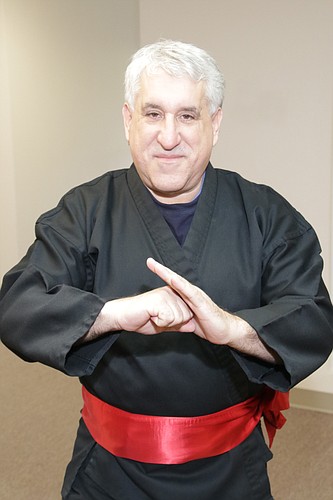- April 1, 2025
-
-
Loading

Loading

EXECUTIVE: Kagan is a consultant to manufacturing industries and executive director of the Southwest Regional Manufacturers Association. He leads a volunteer board of directors engaged in supporting small to medium-size manufacturers in particular, but also assists large manufacturers if needed. “If you are having trouble making your product, maybe not meeting the lead time, you have quality issues, we can come in and help you,” Kagan says. The association can also assist in front office areas such as accounting, taxes and human resources. “Our goal is to have our members call us and say, ‘I need fill in the blank’ and we say, ‘Yes, we have somebody in our association who can help you with that.’”
DIVERSION: Kung fu, san soo discipline. Kagan, 56, is an eighth-degree kung fu master — the equivalent of an eighth-degree black belt — having taken up the martial art while in college at California State University, Long Beach. He brought kung fu to Southwest Florida in 1998, teaching for three decades before closing his studio. He still teaches privately.
YOUNG “GRASSHOPPER”: Kagan’s interest in martial arts in general and kung fu in particular began with Bruce Lee movies and the 1970s TV show “Kung Fu” starring David Carradine. While attending California State University, Long Beach on a fencing scholarship, a friend introduced him to a kung fu club. “I took to martial arts very well, but I also trained very hard because I just love it,” says Kagan. “I tried to do any martial art that came my way and I came upon san soo. I said that is the highest level I've ever seen. Here I am 40 years later still doing it.”
“The grand master who brought the art to American said not a day goes by when he doesn't think of kung fu. What he meant was it's a way of living. It’s a philosophy. He carried himself the same way every day.”
NO TROPHIES: What separates martial arts, says Kagan, is their origin and approach to self-defense. Kung fu originated in China and was developed purely as a form of self defense. There are no kung fu tournaments, no ribbons, no trophies lining the walls of kung fu studios. “We are purely street fighting self-defense,” Kagan says. “We rarely throw the first punch, but we will throw the last one. We also have a philosophy if you have to hit your opponent more than once, the fight is too long.”
SELF RESTRAINT: Kung fu appears to be all about violence to the uninitiated, says Kagan. But reflective of the TV show, the martial art is not about offense, but rather about being prepared to stop a fight before it starts. “You learn it's not all about the physical fighting,” Kagan says. “I've been in a lot of non-fights. When somebody used to ask me what do I teach, my answer is I teach confidence. I teach you to be able to stand up to anybody. The greatest soldier wins without a battle, so that's what we practice and what we teach.”
AT THE FEET OF A MASTER: Kagan studied under one of the top students of Jimmy Whoo, the man who brought kung fu to the United States in the 1930s. Achieving master status after 12 years of study, he brought the discipline to Southwest Florida. “One of my motivations to come to Florida was to bring the art to Florida," he says. "Nobody had done that before. I have since made many black belts and teachers who are carrying on the art here.”
WAX ON, WAX OFF: Each generation of martial artists have their own inspiration. Kagan’s was Bruce Lee and David Carradine. The next wave was led by martial artists and actors Steven Seagal and Jean Claude van Damme. Even the original "Karate Kid" trilogy of movies had their place. “Every so often you have to add another log on the fire like 'Karate Kid' to get people interested,” says Kagan. But could Mr. Miyagi really teach Danny LaRusso to win a karate tournament by painting fences and waxing cars? “I’d have a lot of clean cars if that was the case,” he says.
BUSINESS BELT: “What I’ve learned is not to be intimidated. You go into a conference room and the CEO is in there with all his vice presidents there asking what you are going to do for his company. Of course it's going to be intimidating. But that's my training. I go into every situation as an equal. I will shake your hand and look you in the eye and we are equals. That is my approach to working in the business world. But I also use that for the first line supervisor in front of a machine. I treat him as an equal here and will give him the same respect as I give the CEO.”